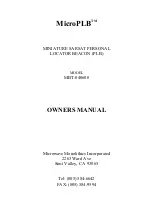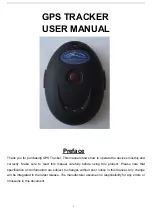
1
Pub. 988-0152-051
Addendum I
Additional Instructions for
Lowrance M56i S/MAP
Your sonar/GPS unit, the M56i, functions exactly like the M56 de-
scribed in the manual provided (part 988-0152-021). In addition, the
M56i contains a communications port for NMEA 0183 output. The in-
structions for connecting data cables and setting up the communica-
tions port appear in this addendum.
NMEA 0183 Data Cable Connections
NMEA is a standard communications format for marine electronic
equipment. The M56i can send information to any device that receives
NMEA 0183 data. This allows the unit to work with VHF marine radios
equipped with the Digital Selective Calling (DSC) distress call feature.
To send NMEA 0183 data, the M56i has one NMEA 0183 version 2.0
communication port. The com port can be used to send NMEA format-
ted data such as your current position.
The provided M56i data cable plugs into the accessory socket on the
right side of the back of your unit's case. This socket can connect
either
an accessory such as a speed or temperature sensor
or
a NMEA 0183
data cable. The data cable ends in two wires that connect to your VHF
radio or other NMEA device. The M56i uses the yellow wire to transmit
and the black shield wire for signal ground.
NOTE:
Some VHF radios, such as the popular Uniden
brand, have input lev-
els which require use of an additional diode and resistor built into the
M56i data cable. This is
Wiring Diagram
A
, which is described on
page 2. The majority of the DSC radios will work with the resistor and
diode as provided by Lowrance Electronics.
A few other radio brands (and other electronic devices) that meet the
NMEA 0183 standard won't need these adapters
and you will have to
remove the resistor and diode to make those work.
This is
Wiring Dia-
gram
B
, which is described on page 3.
Consult your other device's owner’s manual, then read through
all
of
the following instructions before you begin. Use the installation dia-
gram most suited to your brand of radio or other device. If your device
manual indicates an RS-232 connection (i.e., a computer), remove the


























